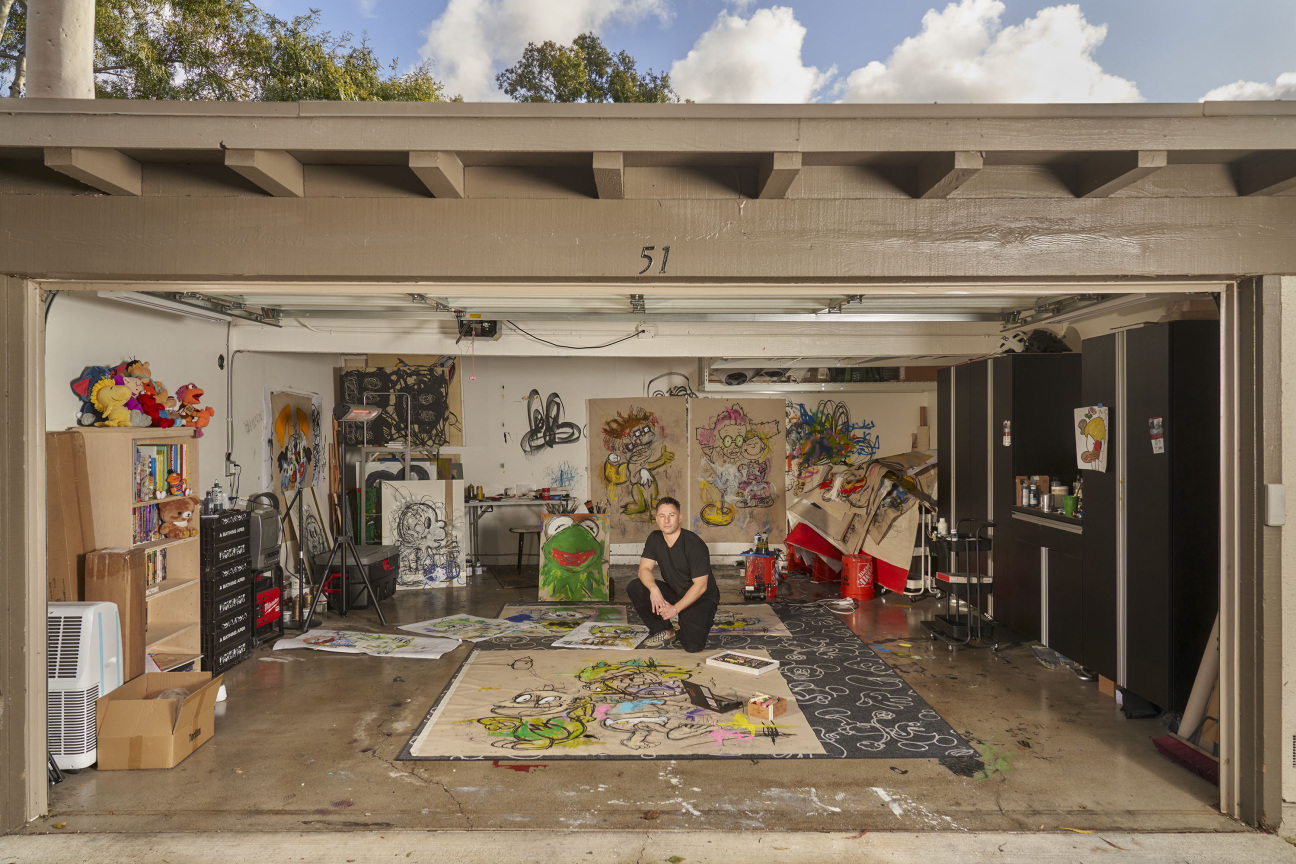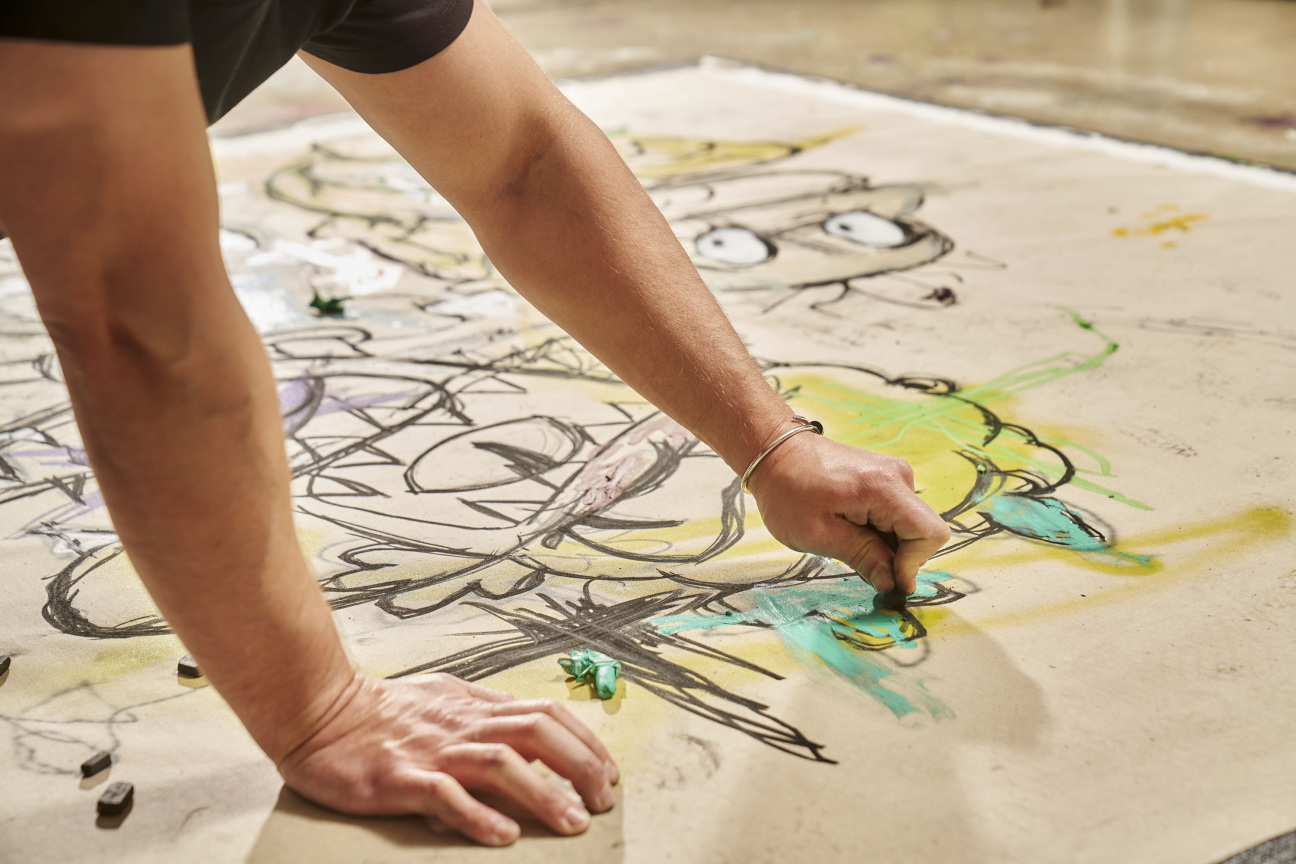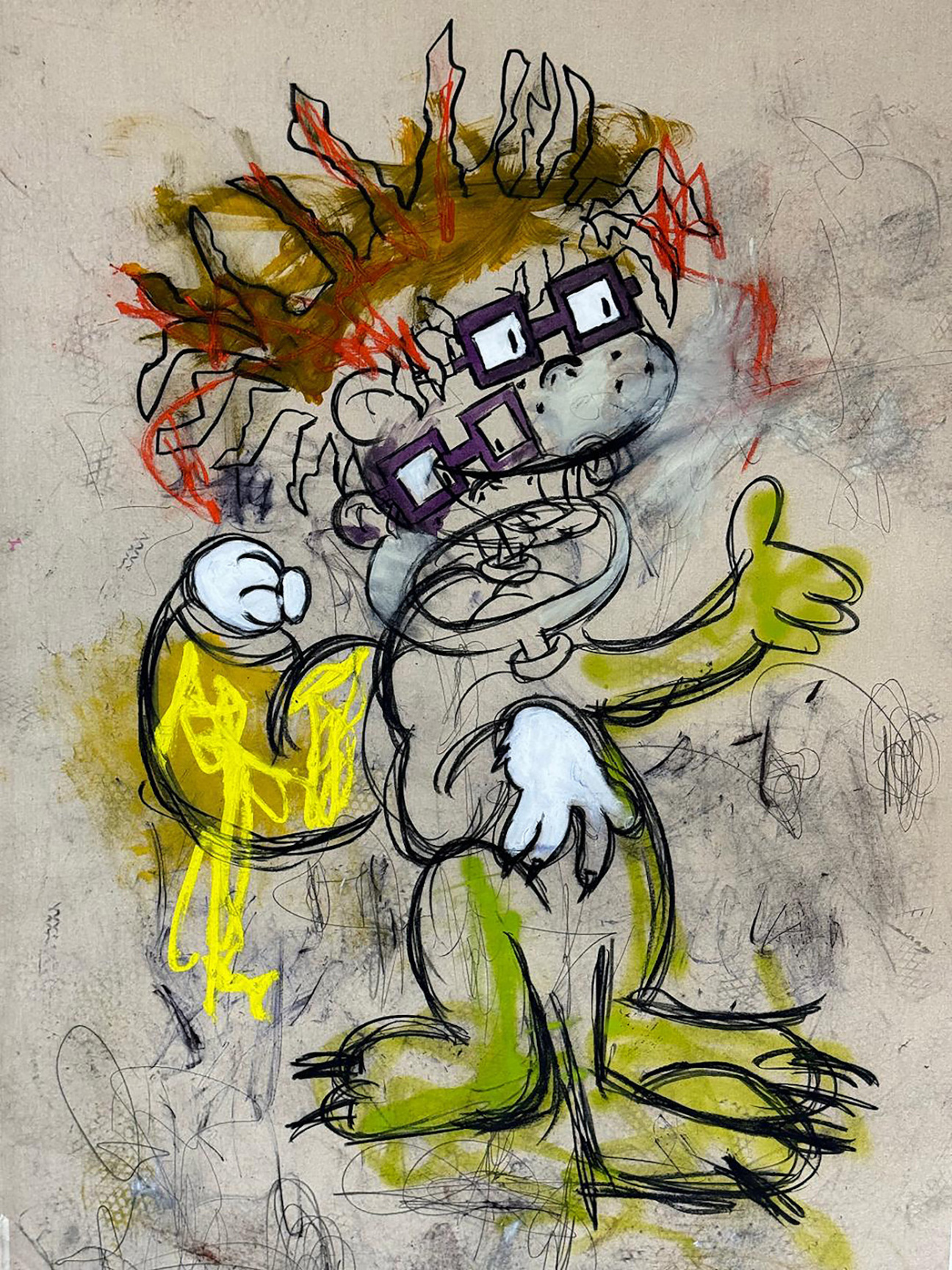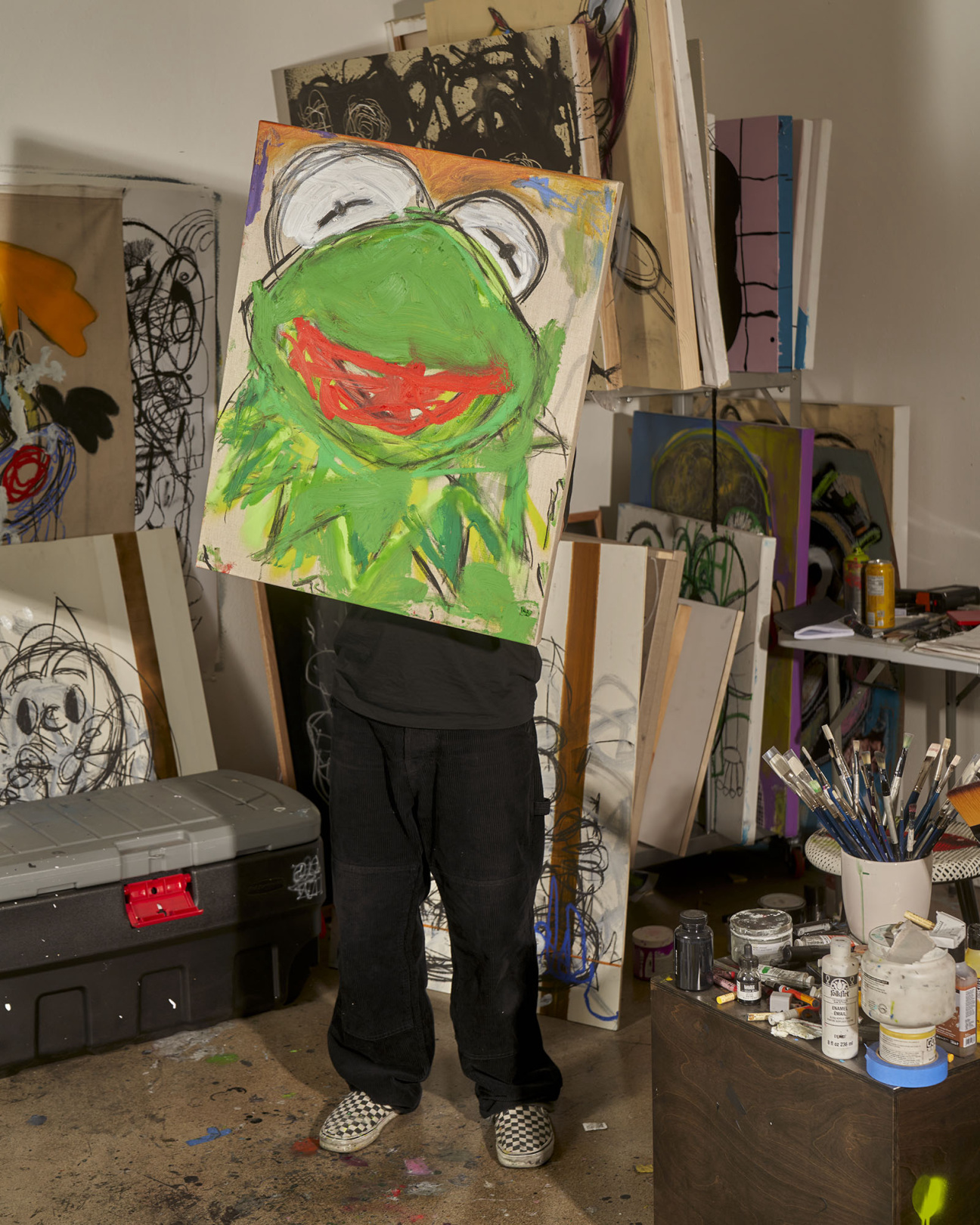
Tony Pharo first picked up art supplies on the advice of his therapist. What began as a way to keep himself occupied during lockdown has turned into a career and a calling. Although he has no formal training, the California-based painter gave himself a crash course in art history and, over the years, refined his technique to develop a signature aesthetic, which he describes as “neo-expressionist Pop art.”
These days, art is a professional path, a tool for healing, and an outlet for play. Pharo, who describes himself as a “big 35-year-old child,” spoke with CULTURED about how he sought to break into the insular art world, how sobriety and Disney characters shaped his work, and why he’ll never stop experimenting.

CULTURED: You characterize your work as neo-expressionist Pop art. How did you arrive at that term?
Tony Pharo: That came kind of on its own. I was at home during Covid, never painted, never sketched, never anything. My therapist had suggested painting for a long time because I had all that free time. I ordered a bunch of stuff. It came. It sat for a month and then I tried it.
I had always enjoyed art but I didn't know anything other than Basquiat and Warhol. Basquiat's kind of expressionistic and I really have always been drawn to characters, cartoons. I'm like a big 35-year-old child. But now it's kind of evolved to neo-expressionist. It's abstract expressionism. It's modern contemporary. It's a lot of things.
CULTURED: Your therapist must patting themselves on the back. They're like, I recommended painting, and now he's a full-time painter.
Pharo: She retired, but she changed my life for sure. I'm only allowed to contact her the day I get married. She said I can write her a letter.



CULTURED: Did you grow up interested in art?
Pharo: You want the real details? I moved to California about nine years ago. In the three months leading up, I was homeless. I always just say I was homeless and people are like, Oh my God. But you know, it wasn't that bad. I lived in my car, broken down under a bridge for those three months. I was addicted to opiates, specifically heroin, and alcohol. Now I haven't done anything, period, since then. I have nine years [sober] this year. I moved here to get sober, went to rehab, and my mom and my sister helped me get insurance. I bought my first home during Covid. That's it in a nutshell. That's the story.
CULTURED: When you were first starting out, were you just messing around with paint on paper? Were you watching YouTube videos?
Pharo: The very first time I left the house during Covid, I went to the art supply store and had no clue what to buy. I bought a bunch of random acrylic colors and whatever else I thought I needed, these cheap canvas panels. One night, it was like 11 p.m.—I'm a night owl—I just started throwing paint down and mixing. I didn't know what I was doing. It literally looked like a five-year-old mixed it with their hand or something, which is ironic now because I try to do more automatism. I'll work from my left hand because it draws your inner child, I've been reading.

CULTURED: There is a real sense of childlike wonder in the pieces. A lot of cartoon characters make appearances. Did you watch cartoons growing up?
Pharo: Oh, for sure. I still watch Rugrats. But yeah, you name it. I have the full Disney collection of VHS because I have a VHS television in my studio. I believe you are your surroundings. If you put up 100 pictures of Disney, you're gonna start thinking and seeing Disney a lot more. Lately I've been teaching myself stitching and sewing. It's not dark for me, but it may sound dark to you—I'm deconstructing stuffed animals and then reattaching different parts and stitching them [together]. Mighty Mouse has always got this yellow suit with the red cape and he's always flexing. I always gravitate towards his arms flexing. So I put his arm on one piece.
CULTURED: How did it feel entering the art world as a self-trained artist? The art world can be very insular.
Pharo: When I started painting, I just become obsessed. I'll obsess for days or weeks about [a painting], or even, in a few cases, months. Then that'll turn into a new idea or piece. There's been a few situations where it'll arise on its own, like applying to galleries or when you get harsh feedback. I've made one friend [in the art world] … and he's very honest. He's from New York. When he talks, because I don't get very emotional in general, I’m like, “Oh my God. That's so poetic. That's what you see in my work?”

I often will journal, looking at my work from a third person perspective. It’s like a routine now. I think of some random word, and then when I reread my journals later, [I find that] I completely made this word up. Usually, I'll name the piece that. One time was like, creative genius, right? But I put “crenius.”
CULTURED: On a technical level, how have you seen your work change as you develop more technical expertise?
Pharo: I'm big on experimentation. I don't really like to work in confined or restrained thinking. I have a friend who has been painting for like nine years out of LA. He'll only airbrush for a month, or only [use] oil sticks for a month. I'm like, how do you only use oil stick for a month? It's insane. I get the discipline. But everybody is different, right? Different strokes for different folks. One part of me wants to be squeaky clean and then the other part of me is just a beautifully constructed mess.










 in your life?
in your life?

